
However, that would be wrong. This is the actual quantity of each type of chips.
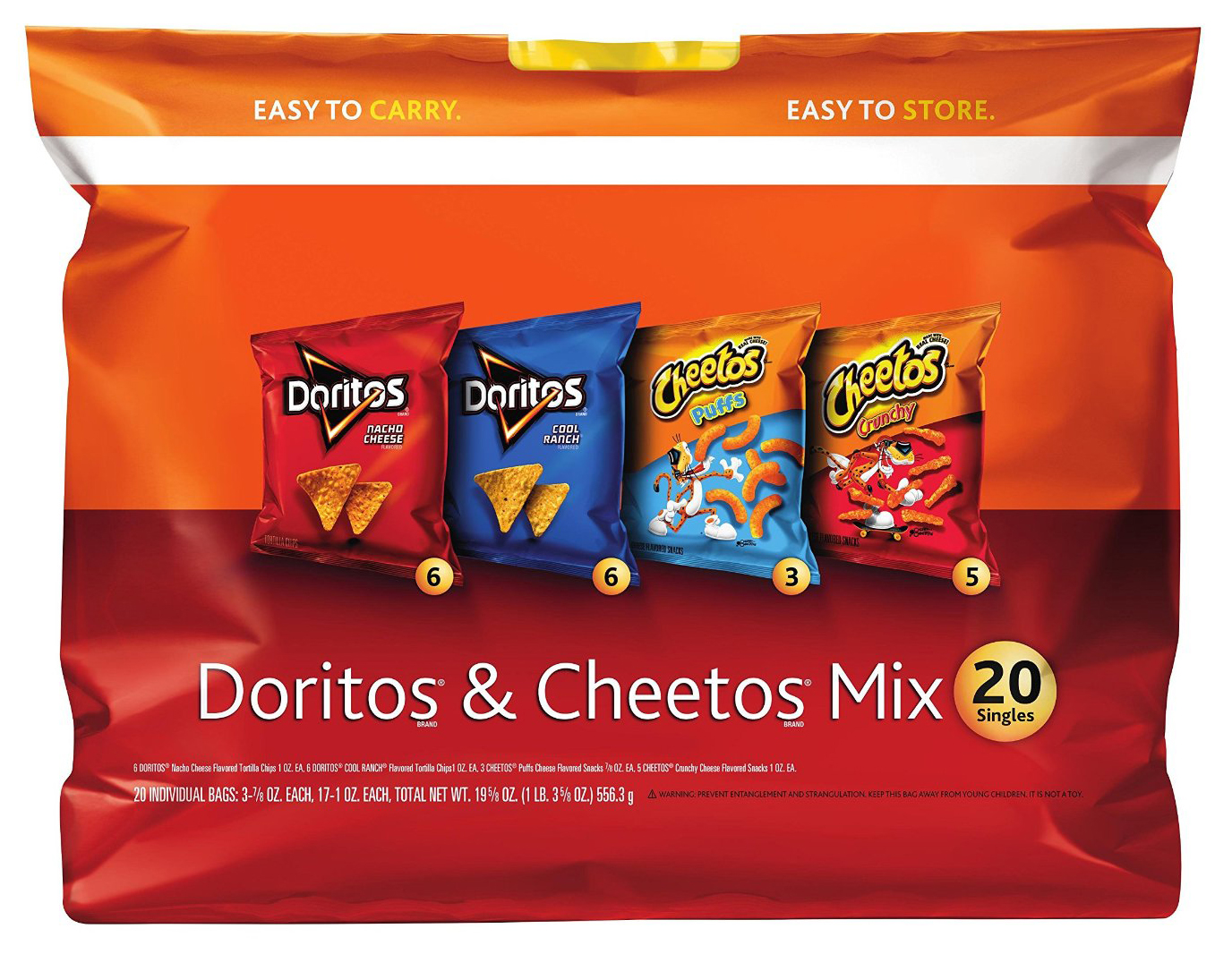
- How many of each bag of chips will there be?
- How many of each bag of chips would you choose if the chips were all for you?
- How would the amount of each bag of chips change if you had to take your classmates’ preferences into consideration?
- What assumptions are you or Frito-Lay making about chip eaters’ preferences?
- Divide the total number of bags by the number of flavors in the package. This may lead to a discussion as to how to handle a remainder (i.e. which flavor gets an extra bag or can you split the remainder across the flavors).
- Let people choose their own combination of flavors each time. This may seem like a good idea in theory but is not practical for a company that mass produces their products.
- Survey their classmates and use the results to distribute the bags according to their classmates’ preferences.
My hope is that after students have a conversation about each strategies’ pros and cons, they will conclude that surveying their classmates will enable the fairest results (and conveniently incorporates CCSS 7.SP.1 and CCSS 7.SP.2). Here is an example of how this might go in class once they know they need to take a survey. Start by showing them a picture of the chip package with the quantities blanked out:
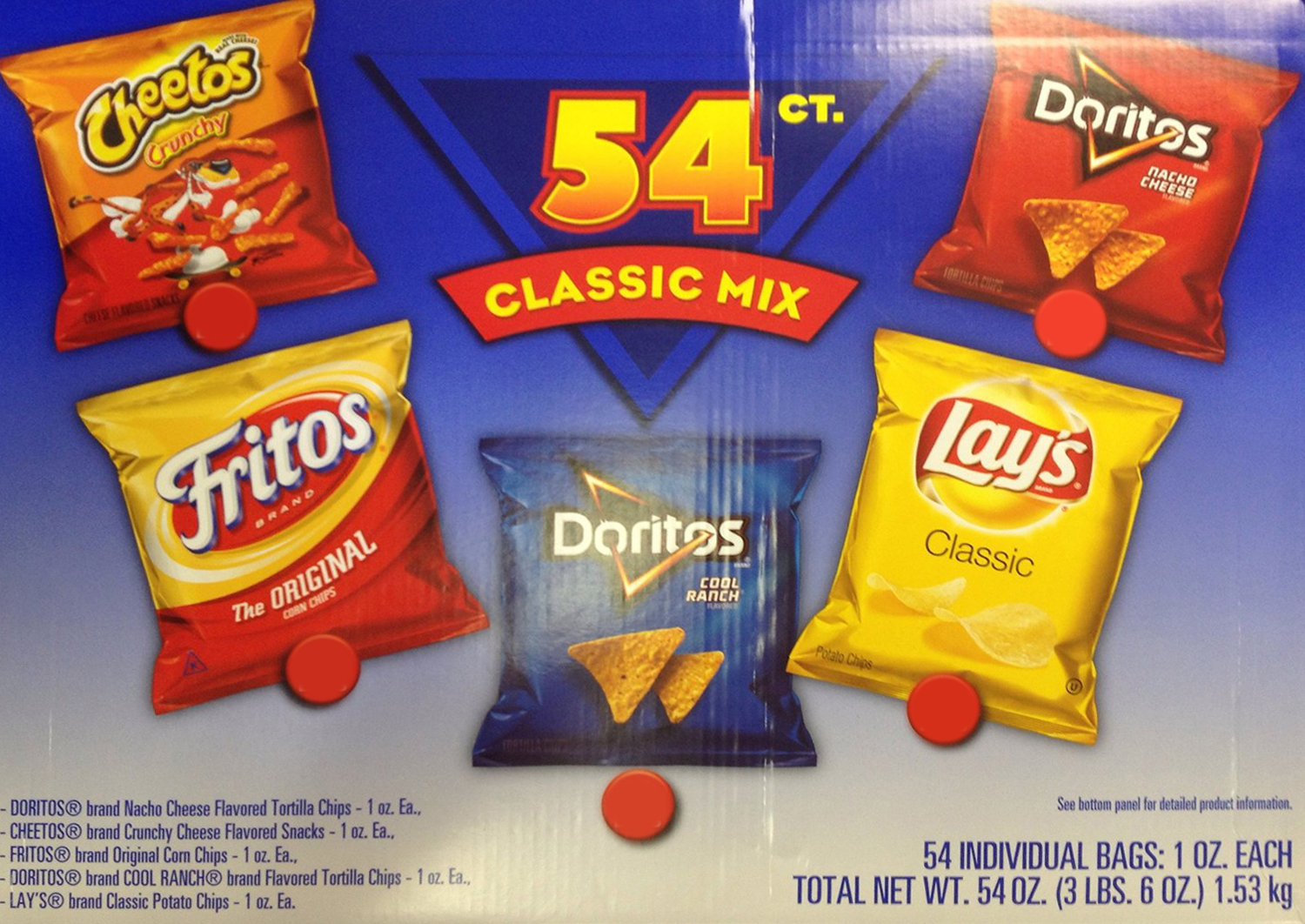
Next, have students vote for their favorite type of chips and collect the results. Let’s say that in a class of 36 students you get:
- 12 votes for Cheetos
- 6 votes for Fritos
- 7 votes for Doritos (Cool Ranch)
- 3 votes for Lay’s
- 8 votes for Doritos (Nacho Cheese)
Accordingly, the favorites breakdown as:
- 33.3% (12/36) for Cheetos
- 16.7% (6/36) for Fritos
- 19.4% (7/36) for Doritos (Cool Ranch)
- 8.3% (3/36) for Lay’s
- 22.2% (8/36) for Doritos (Nacho Cheese)
With 54 bags in a package, a distribution of chips that matches the class’ preferences (based on the voting percentages) would be:
- 18 bags of Cheetos
- 9 bags of Fritos
- 10.5 bags of Doritos (Cool Ranch)
- 4.5 bags of Lay’s
- 12 bags of Doritos (Nacho Cheese)
It is important to note that the breakdown above includes a half bag of Doritos (Cool Ranch) and a half bag of Lay’s. It is worth having a conversation about there being an extra bag and how to decide what happens to it. The reality is that there would not likely be half bags and a decision would have to be made about which flavor would get an extra bag.
Once students have reached their conclusion for how many of each type of bag there should be, show them the actual number of bags in the package:
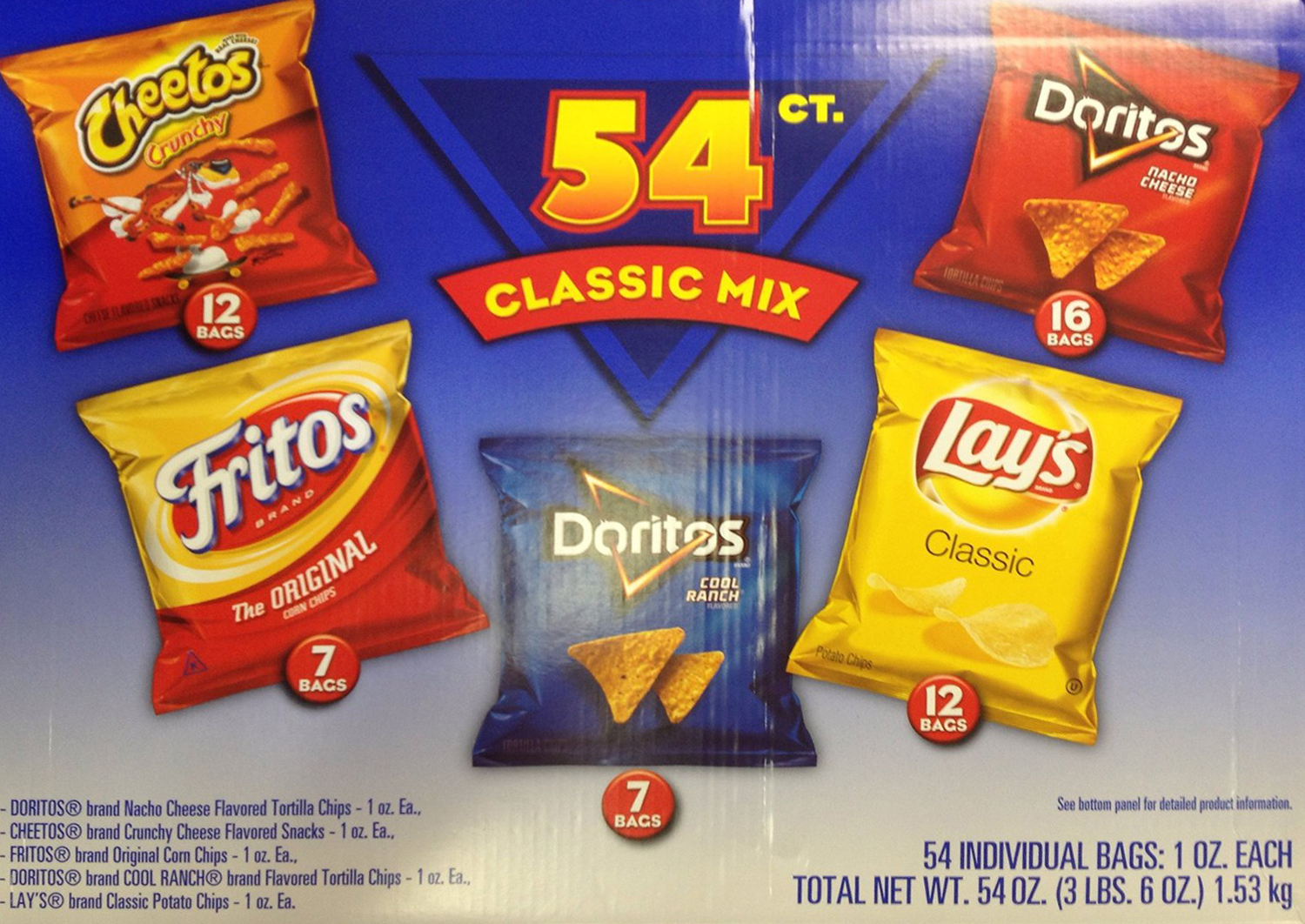
In this example, all of the flavors had a different quantity of bags. It is important that kids have time to reflect on why the answers are different. Some may think that they have miscalculated or had a mathematical error. Make sure to facilitate the conversation towards realizing that their classroom may not be a representative sample of the preferences of people buying the chips.
Here are two extensions to consider:
- As it is most likely the case that a class’ preference will not completely match up with the package’s distribution, consider comparing each class’ results against the combined results of all classes and/or the whole school to determine if their “sample is representative of that population” as stated in CCSS 7.SP.1.
- Students might feel that voting only for their favorite flavor does not provide a complete picture. For example, a flavor may be the favorite of few but the second choice of many and should therefore have a larger share of the bags.
- Classic Mix – 20 bags
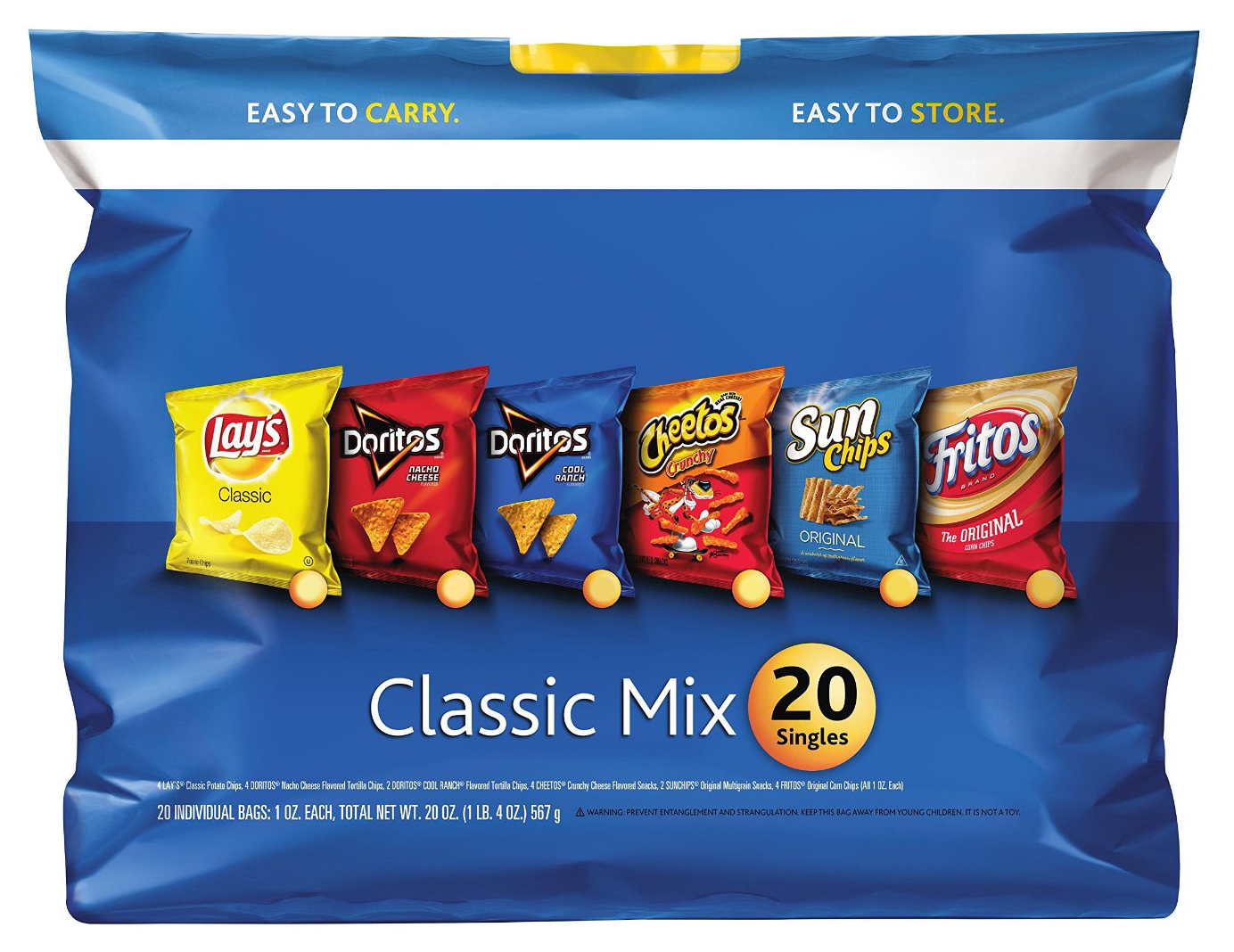

- Flavor Mix – 20 bags
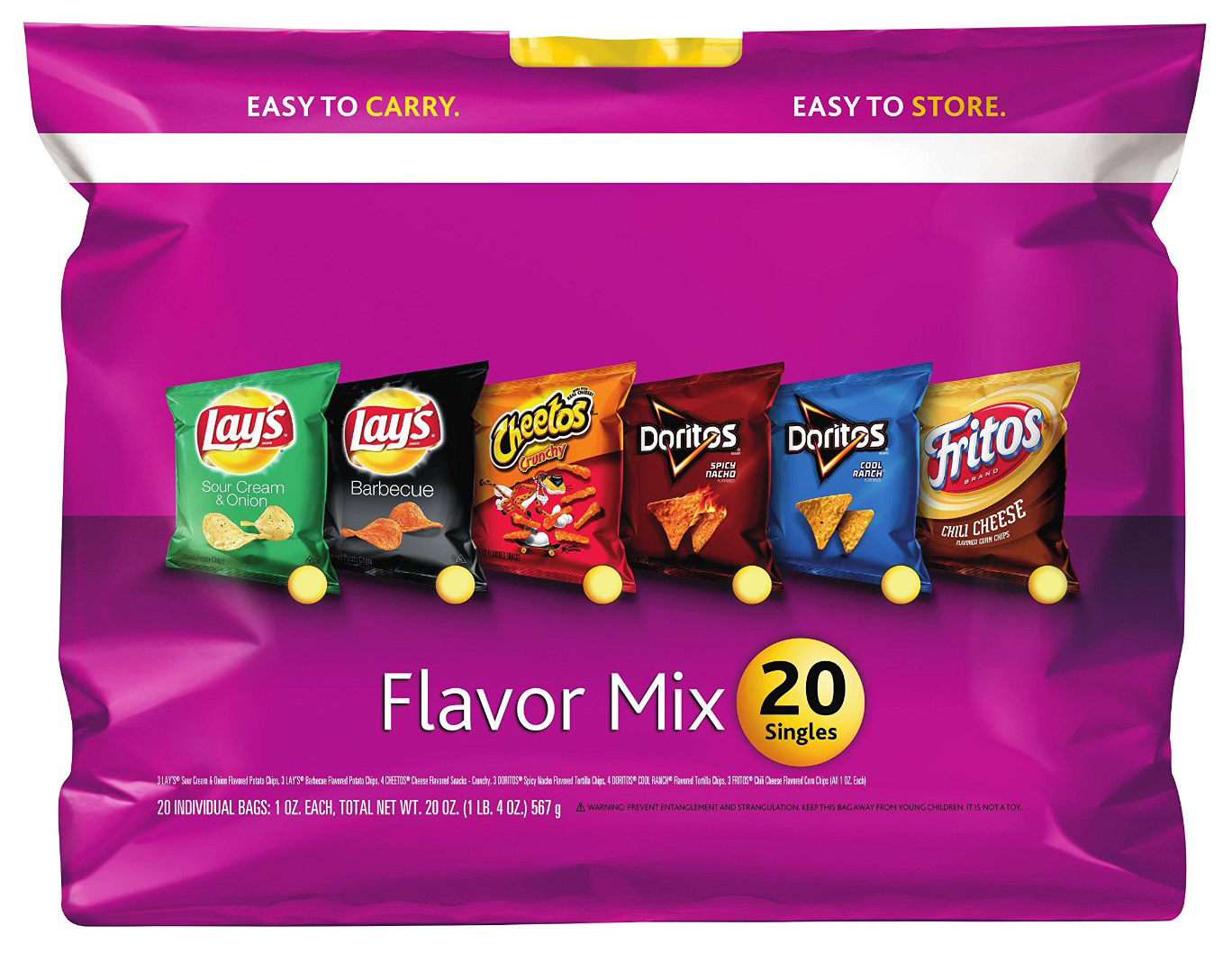
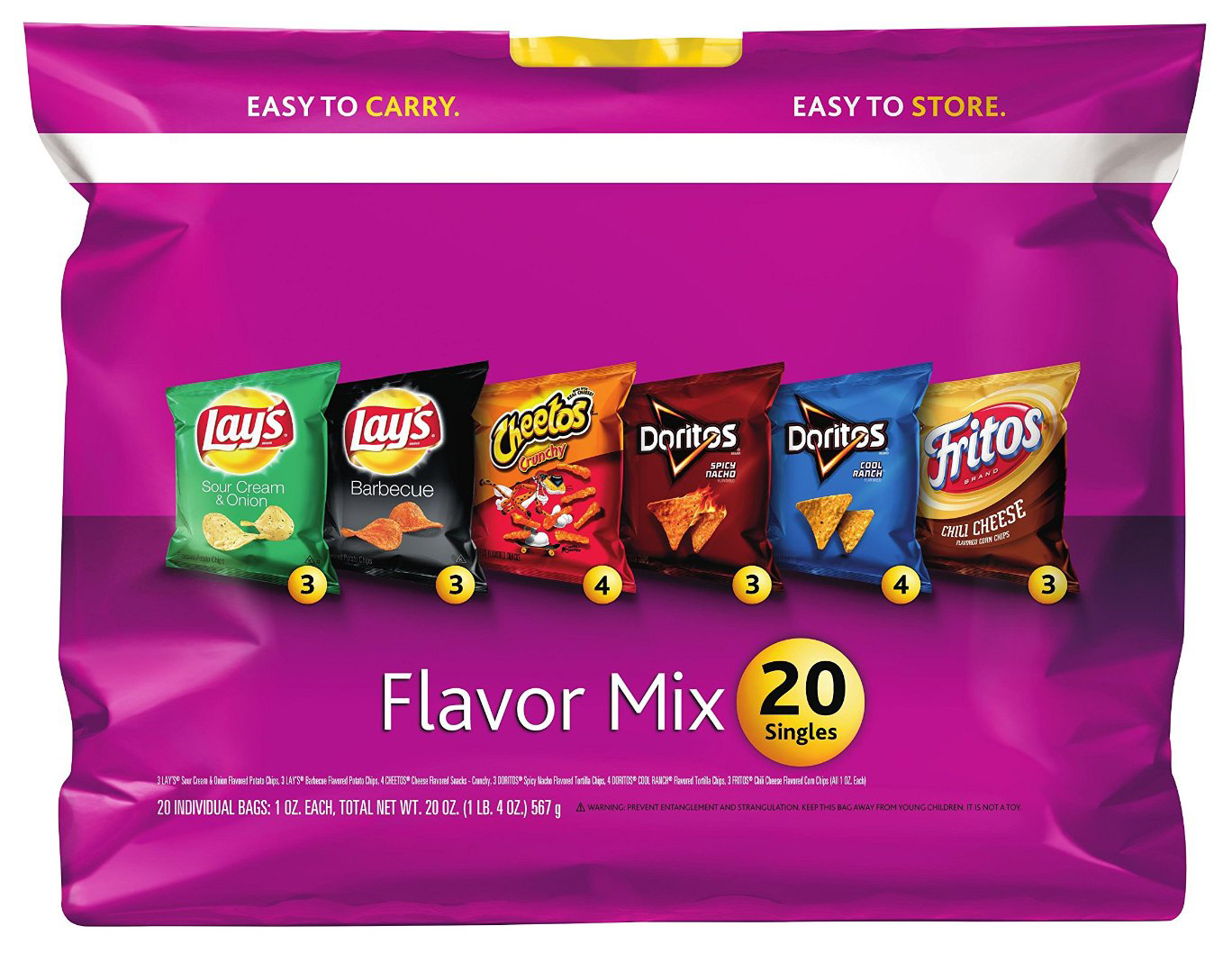
- Variety Mix – 30 bags
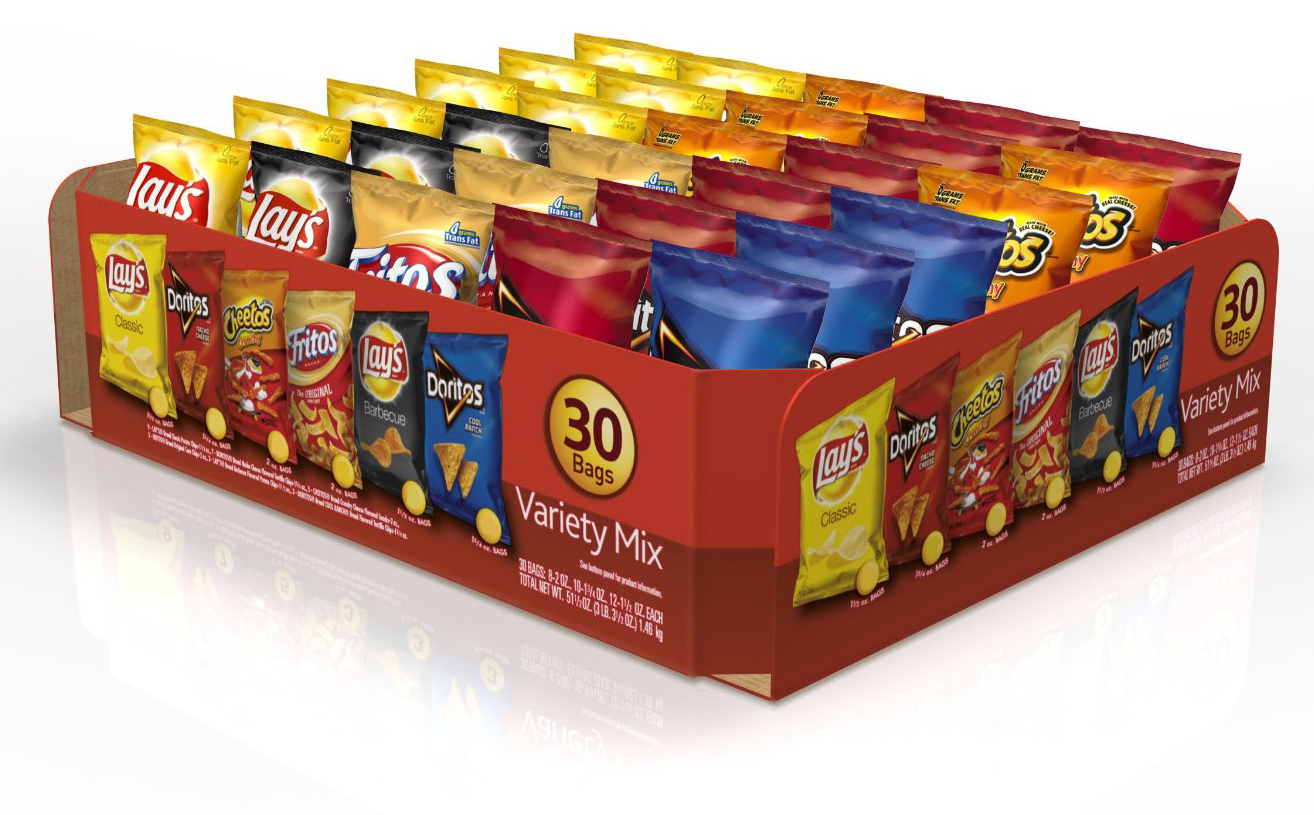
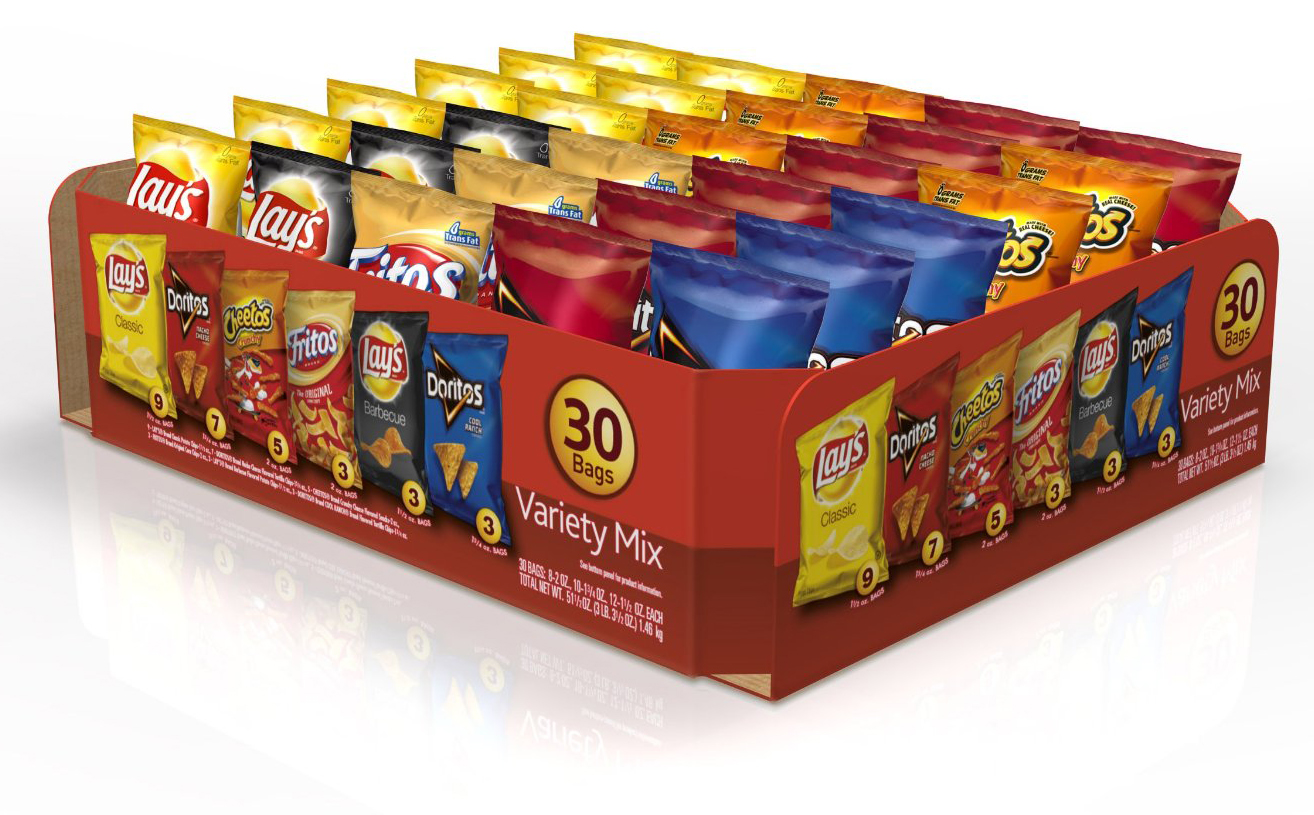
- Flavor Mix – 32 bags
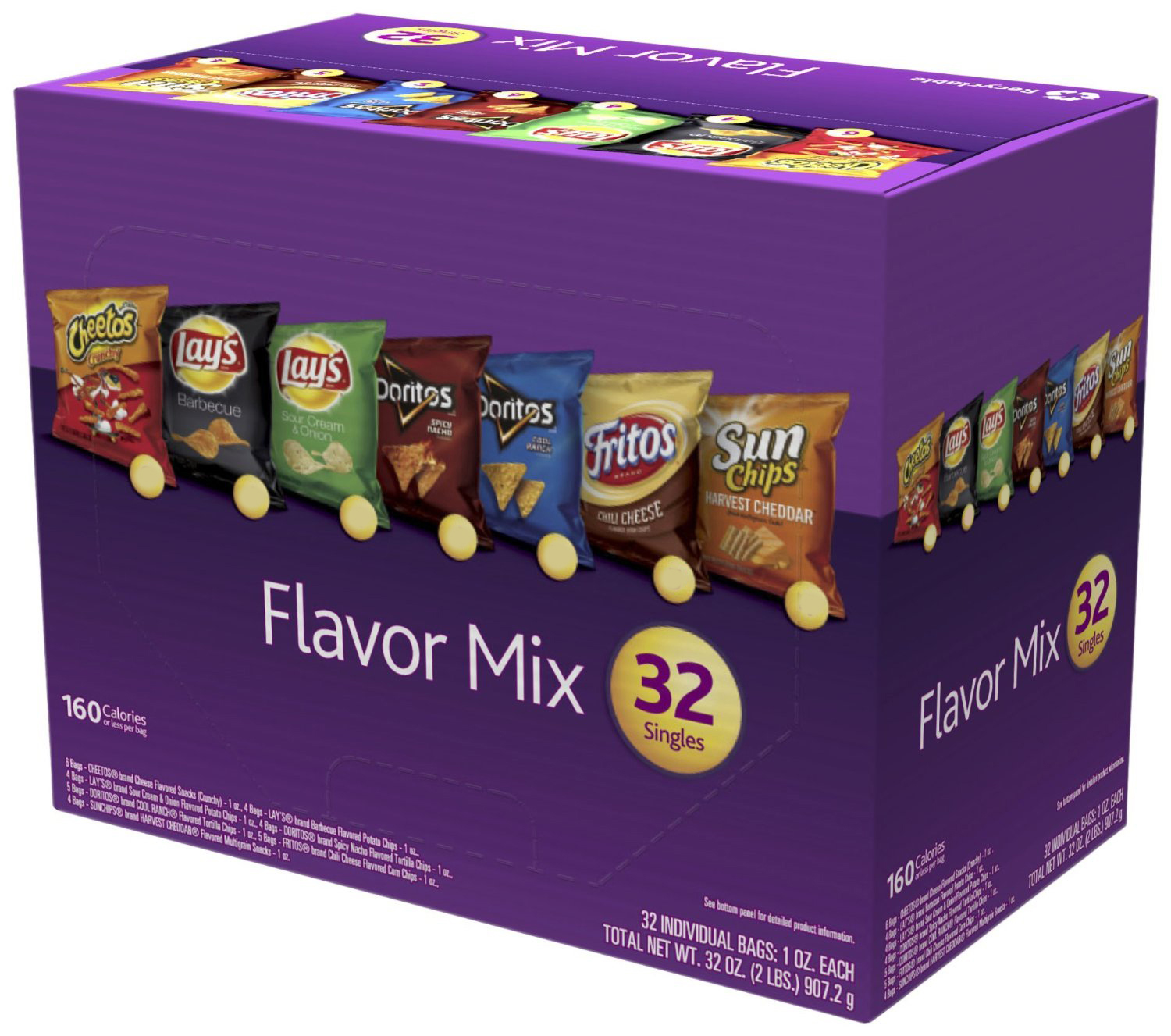

- Classic Mix – 32 bags


- Classic Mix – 54 bags

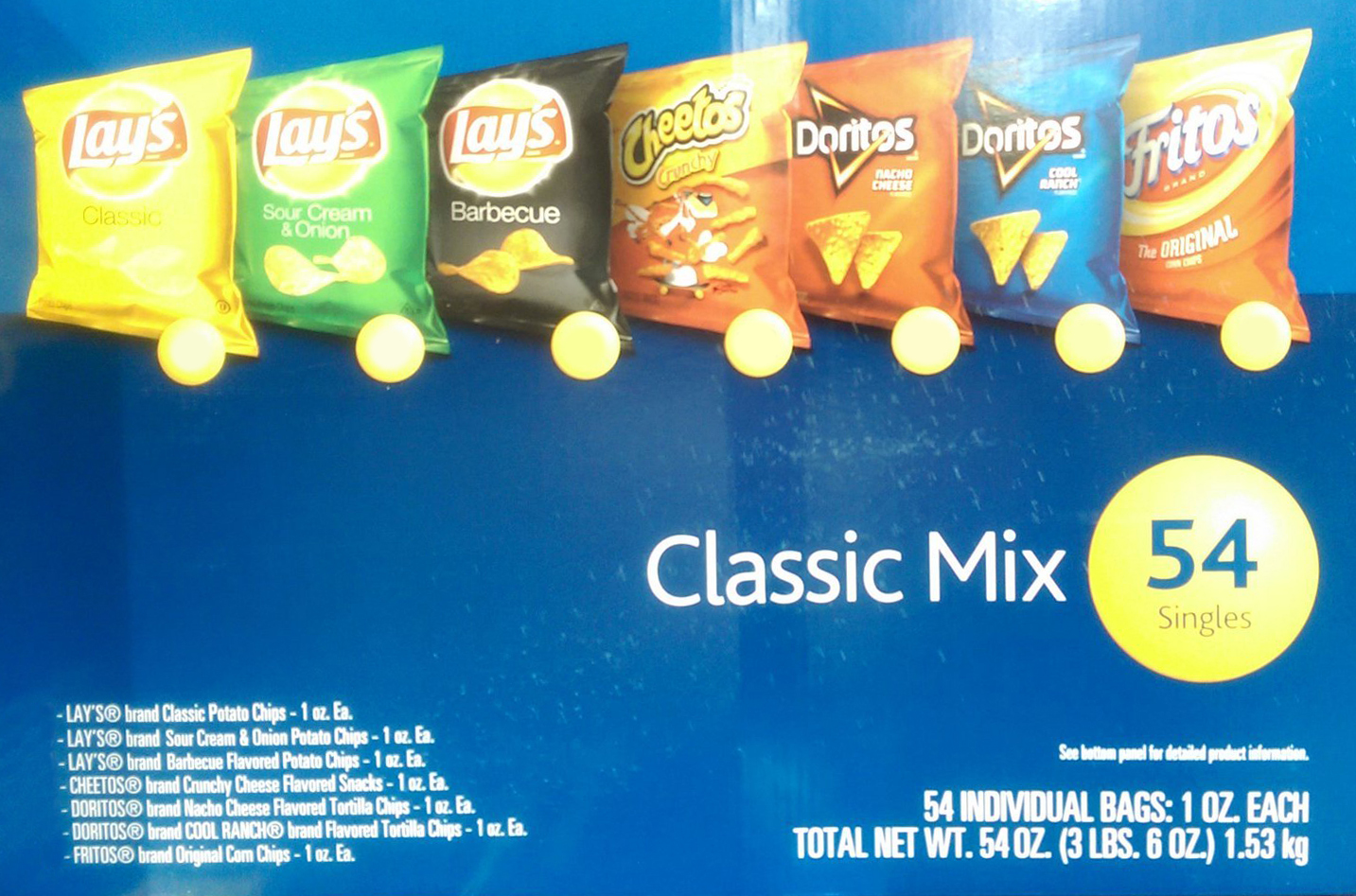
- CCSS 6.RP.3 – Use ratio and rate reasoning to solve real-world and mathematical problems, e.g., by reasoning about tables of equivalent ratios, tape diagrams, double number line diagrams, or equations.
- CCSS 6.RP.3c – Find a percent of a quantity as a rate per 100 (e.g., 30% of a quantity means 30/100 times the quantity); solve problems involving finding the whole, given a part and the percent.
- CCSS 7.RP.2 – Recognize and represent proportional relationships between quantities.
- CCSS 7.RP.3 – Use proportional relationships to solve multistep ratio and percent problems. Examples: simple interest, tax, markups and markdowns, gratuities and commissions, fees, percent increase and decrease, percent error.
- CCSS 7.SP.1 – Understand that statistics can be used to gain information about a population by examining a sample of the population; generalizations about a population from a sample are valid only if the sample is representative of that population. Understand that random sampling tends to produce representative samples and support valid inferences.
- CCSS 7.SP.2 – Use data from a random sample to draw inferences about a population with an unknown characteristic of interest. Generate multiple samples (or simulated samples) of the same size to gauge the variation in estimates or predictions. For example, estimate the mean word length in a book by randomly sampling words from the book; predict the winner of a school election based on randomly sampled survey data. Gauge how far off the estimate or prediction might be.

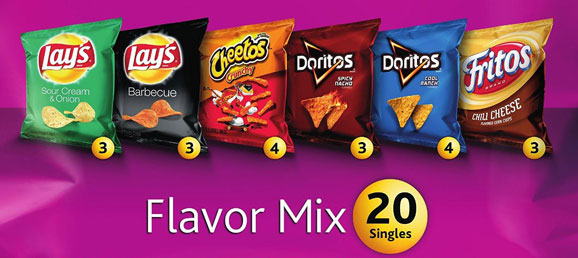

Just curious if anyone figured out why the ratio of chips changes drastically between each Mix. If Doritos Nacho Cheese is the most popular chip why isn’t it the most in all the Mixes?
My best guess is that there are regional preferences where some chips are more popular and others less popular.
I thought this would interest you. Frito Lay conducted a Super Bowl survey and posted their results:
https://www.fritolay.com/blog/blog-post/snack-chat/2019/01/17/snack-index
Neat! Does it have the data somewhere? I can’t seem to find it.
Is there a cost difference in producing any of the various varieties that would make it more profitable to include more of the less expensive varieties in the mix?
I totally wish I had access to that information. I’d have to imagine that there is but I also have no idea what that difference is.
Why am I unable to print the lessons??
You can download the images using the Download Lesson Files button and then copy it into what you need. The Download Lesson PDF allows you to get a PDF of what’s on this page.
Thank you for sharing this lesson. I have used this for the past 2 years and the kids get really into it. I love some of the discussion and ideas that 5th graders come up with about the chip difference. I even had one little conspiracy theorist say that she thought they put the least popular chips in the largest amount because they want you to learn to like them and since they don;t sell well in individual packages the company always has leftovers.
Ha! Who knows? Maybe your conspiracy theorist is right! Seriously though, I love the opportunity it gives students to think deeply and creatively about the mathematics.